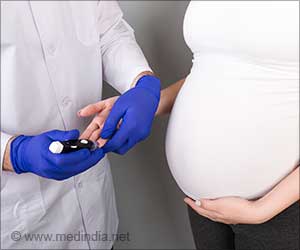Healthiest cardiovascular health score is 100. Overall scores below 50 indicate 'low' cardiovascular health and 50-79 is 'moderate' cardiovascular health.
- Sleep has been added to the checklist of cardiovascular health
- Healthier sleep patterns can reduce the risk of obesity, high blood pressure and diabetes
- Wearable devices can offer people the ability to monitor their sleep habits at home regularly
Other updates to the measures of optimal cardiovascular health, now for anyone ages 2 and older, include a new guide to assess diet; accounting for exposure to secondhand smoke and vaping; using non-HDL cholesterol instead of total cholesterol to measure blood lipids; and expanding the blood sugar measure to include Hb A1c, a key measure to assess Type 2 diabetes risk.
Cardiovascular Disease
Cardiovascular disease is the number one cause of death in the U.S. and globally. According to the Association’s 2022 Heart Disease and Stroke Statistics Update, approximately 121.5 million people in the U.S. have high blood pressure, 100 million have obesity, more than 28 million people have Type 2 diabetes, and only 1 in 4 adults reported achieving the physical activity and exercise recommended in the U.S. Department of Health and Human Services’ Physical Activity Guidelines for Americans, 2nd edition.Various research studies over the past two decades indicate more than 80% of all cardiovascular events may be prevented by healthy lifestyle and management of known cardiovascular risk factors.
“The new metric of sleep duration reflects the latest research findings: sleep impacts overall health, and people who have healthier sleep patterns manage health factors such as weight, blood pressure or risk for Type 2 diabetes more effectively,” said American Heart Association President Donald M. Lloyd-Jones, M.D., Sc.M., FAHA, who led the advisory writing group and is chair of the department of preventive medicine, the Eileen M. Foell Professor of Heart Research and Professor of Preventive Medicine (Epidemiology), medicine (Cardiology) and Pediatrics at Northwestern University’s Feinberg School of Medicine in Chicago. “In addition, advances in ways to measure sleep, such as with wearable devices, now offer people the ability to reliably and routinely monitor their sleep habits at home.”
The 7 metrics of Cardiovascular Health
The Association first defined the 7 metrics for cardiovascular health in 2010 to identify the specific health behaviors and health factors that drive optimal heart and brain health. Brain health in relation to cardiovascular health was defined in a 2017 American Heart Association Presidential Advisory. It was further acknowledged as an important component of optimal cardiovascular health in the Association’s January 2021 Scientific Statement on the mind-heart-body connection. Findings from both papers are incorporated into Life’s Essential 8™.After 12 years and more than 2,400 scientific papers on the topic, new discoveries in heart and brain health and in the ways to measure cardiovascular health provided an opportunity to revisit each health component in more detail. Four of the original metrics have been redefined for consistency with newer clinical guidelines or compatibility with new measurement tools. Also, the scoring system can now be applied to anyone ages 2 and older.
8 metrics for Cardiovascular Health
The Life’s Essential 8™ components of optimal cardiovascular health are divided into two major areas – health behaviors and health factors. Health behaviors include diet, physical activity, nicotine exposure and sleep. Health factors are body mass index, cholesterol levels, blood sugar and blood pressure. “The idea of optimal cardiovascular health is important because it gives people positive goals to work toward at any stage of life,” said Lloyd-Jones.“Life’s Simple 7™ has served as a proven, powerful tool for understanding how to achieve healthy aging and ways to improve cardiovascular health while decreasing the risks of developing heart disease and stroke, as well as cancer, dementia and many other chronic diseases,” he said. “Given the evolving research, it was important to address some limitations to the original metrics, particularly in ways they’ve been applied to people from diverse racial and ethnic populations.”
Lloyd-Jones explained that some of the previous metrics, such as diet, were not as sensitive to differences among people, or as responsive to changes over time within a single individual. “We felt it was the right time to conduct a comprehensive review of the latest research to refine the existing metrics and consider any new metrics that add value to assessing cardiovascular health for all people.”
Life’s Essential 8™ includes:
- Diet (updated): A new guide to assess diet quality for adults and children at the individual level (for individual health care and dietary counseling) and at the population level (for research and public health purposes). At the population level, dietary assessment is based on daily intake of elements in the Dietary Approaches to Stop Hypertension (DASH) eating pattern. The DASH-style diet score has eight components: high intake of fruits, vegetables, nuts and legumes, whole grains, low-fat dairy, and low intake of sodium, red and processed meats, and sweetened drinks. For individuals, the Mediterranean Eating Pattern for Americans (MEPA) is used to assess and monitor cardiovascular health. The MEPA is a DASH-style eating pattern that can be measured with 16 yes or no questions about the weekly frequency of eating olive oil, vegetables, berries, meat, fish, dairy, grains, etc. The MEPA screener does not include consumption of sugar-sweetened beverages, hence clinicians are encouraged to seek this information at the time of assessment.
- Physical activity (no changes): Activity is measured by the total number of minutes of moderate or vigorous physical activity per week, as defined by the U.S. Physical Activity Guidelines for Americans, 2nd edition. The optimal level is 150 minutes of moderate physical activity or more per week or 75 minutes per week of vigorous-intensity physical activity for adults; 420 minutes or more per week for children ages 6 and older; and age-specific modifications for younger children.
- Nicotine exposure (updated): Use of inhaled nicotine-delivery systems, which includes e-cigarettes or vaping devices, is added since the previous metric only monitored traditional, combustible cigarettes. This reflects use by adults and youth and their implications on long-term health. Life’s Essential 8™ also includes second-hand smoke exposure for children and adults.
- Sleep duration (new): Sleep duration is associated with cardiovascular health. Measured by average hours of sleep per night, the ideal level is 7-9 hours daily for adults. Ideal daily sleep ranges for children are 10-16 hours per 24 hours for ages 5 and younger; 9-12 hours for ages 6-12 years; and 8-10 hours for ages 13-18 years.
- Body mass index (no changes): The writing group acknowledges that body mass index (BMI) is an imperfect metric, yet it is easily calculated and widely available; therefore, BMI continues as a reasonable gauge to assess weight categories that may lead to health problems. BMI of 18.5–24.9 is associated with the highest levels of cardiovascular health. The writing group notes that BMI ranges and the subsequent health risks associated with them may differ among people from diverse racial or ethnic backgrounds or ancestry. This aligns with the World Health Organization’s recommendations to adjust BMI ranges for people of Asian or Pacific Islander ancestry because recent evidence indicates their risk of conditions such as Cardiovascular Disease (CVD) or Type 2 diabetes is higher at a lower BMI.
- Blood lipids (updated): The metric for blood lipids (cholesterol and triglycerides) is updated to use non-HDL cholesterol as the preferred number to monitor, rather than total cholesterol. HDL is the “good” cholesterol. Other forms of cholesterol, when high, are linked to CVD risk. This shift is made because non-HDL cholesterol can be measured without fasting beforehand (thereby increasing its availability at any time of day and implementation at more appointments) and reliably calculated among all people.
- Blood glucose (updated): This metric is expanded to include the option of Hb A1c readings or blood glucose levels for people with or without Type 1 or Type 2 diabetes or prediabetes. Hb A1c can better reflect long-term glycemic control.
- Blood pressure (no changes): Blood pressure criteria remain unchanged from the Association’s 2017 guidelines that established levels less than 120/80 mm Hg as optimal, and hypertension defined as 130-139 mm Hg systolic pressure (the top number in a reading) or 80-89 mm Hg diastolic pressure (bottom number).
The advisory recommends measuring cholesterol, blood sugar, blood pressure, height and weight at least every five years for the most complete and accurate Life’s Essential 8™ score.
Source-Eurekalert
















